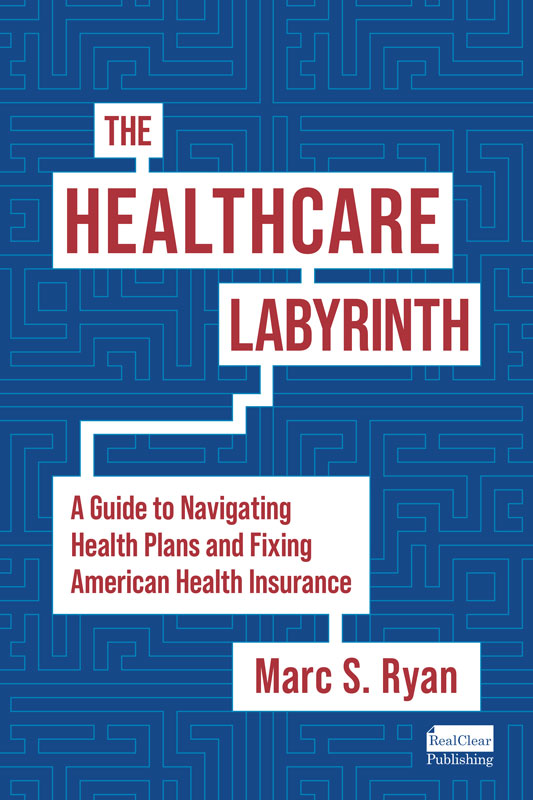Contraction counter very active for 2026
With the publication of the landscape files, publicly traded company announcements, agent and broker insights, and the start of open enrollment on October 1, the magnitude of contraction in the Medicare Advantage (MA) industry is better known. While the Centers for Medicare and Medicaid Services (CMS) puts its usual best spin on plan participation, choice, and premiums, it appears that contraction in terms of geographies, products, and benefits could be huge. Indeed, some are predicting the “forced moves” by enrollees due to terminations will hit the 2 million from 2025.
2025 contraction overall
To refresh your memory of what happened in 2025, here are some important statistics for an alarming downsizing by plans:
- 1,615 counties saw reductions vs. 1,112 with increases. About half of all U.S. counties saw contraction and this was especially true for more rural areas. Over 70% of urban counties saw plan losses.
- 72 counties lost all MA-Part D (MA-PD) coverage.
- At least 18 organizations left MA in 2025, including a few prominent Blues.
- Between 1.8 million and 2 million MA enrollees had to find an alternative benefit package or insurer because of the massive contraction.
- Oliver Wyman found that approximately 1.3 million members for 2025 had to find an alternative when their Preferred Provider Organization (PPO) plans were sunset, while about 530,000 members who had Health Maintenance Organization (HMO) plans had to find new coverage.
- While individual MA plan offerings declined by 6.54% in 2025, Special Needs Plan (SNP) offerings actually increased 8.5% in 2025.
- In most years, less than 100,000 people need to change their plan or product because it is going away.
Big MA plan contraction in 2025
In terms of big MA plans themselves:
- From January 2024 to February 2025, Humana dropped by 404K. Its benefit and product changes in 2025 forced over 500,000 to move to new plans.
- Aetna dropped by 253K from January 2025 to February 2025. Its changes in 2025 forced 450,000 to find new plans.
- Centene also contracted in the timeframe by 69K.
- United, too, reduced offerings in 2025. About 250K had to find new plans, although United grew enrollment overall from 2024 to 2025.
2026 contraction and some product growth
The number of plans nationwide will remain about stable at 5,600 products, but this is a net figure taking into account both expansions and contractions. There are major plan terminations, commission eliminations, and benefit or product reductions. Major health plans contracted in a number of areas and especially contracted the Preferred Provider Organization (PPO) product.
We will see increases in MA plans in 15 states, while 33 states and Washington D.C. will see decreases. Deft Research says a record 9.8 million, or 28%, could switch plans, compared with 23% in 2025. This is not those forced to switch due to plan terminations, but another good metric to understand overall contraction and disruption.
Enrollees will have access to 31 MA plans per county in 2026, down from 34 in 2025 and 45 in 2024, an 8.8% reduction. This reflects market consolidation and optimization strategies by insurers. The total number of MA-PD plans will decline from 3,290 in 2025 to 2,989 in 2026, a 9.1% decrease. Existing MA-PD plans will see premiums increase by about $3 on average. Special Needs Plans (SNPs), though, will see lower premiums on average.
An ATI Advisory analysis says individual MA plans will decrease 9% compared with 2025. (Individual excludes SNPs and employer group MA.) SNP offerings will increase between 19% and 33% (depending on the source and classification — ATI says 33%). SNPs will have about two more options on average in counties nationwide. The SNP growth indicates a strategic focus on higher margin plans with members with chronic conditions or dual eligibility. ATI says institutional or I-SNPs will drop 6%, dual eligible or D-SNPs will grow by 15%, and Chronic Care or C-SNPs will grow by 42%. D-SNPs still dominate overall numbers in terms of benefit packages and enrollment. Investments in C-SNPs are occurring as a hedge. They carry increased regulatory requirements, but not to the extent of D-SNPs, which are undergoing major integration between the Medicare and Medicaid programs.
As with regular MA, benefits were trimmed in most SNP plans from 2025 (especially supplemental benefits), but some plans also enhanced benefits (e.g., Humana).
Big Plan changes
UnitedHealthcare — United said it would seek to shed more than 600,000 lives in 2026 by ending unprofitable plans. Indeed, its offerings appear to be going down by about 14%. County penetration will go down about 4% nationwide.
Humana – With its financial recovery in process, Humana appears to have expanded its offerings by about 15%. County penetration, though, wil go down about 6.8% nationwide.
Aetna – CVS Health’s Aetna announced it would end nearly 90 MA plan benefit packages (PBPs) across 34 states in 2026. Most are PPOs. Aetna’s offerings appear to be going down by about 21%. County penetration will drop about 4.4% nationwide.
Elevance Health – Elevance Health said it would eliminate unprofitable MA plans, impacting 150,000 individual and group members. It appears its MA offerings will go down by 26%. County penetration will increase, though, by about 2.7% nationwide.
Centene – It appears Centene’s offerings will drop by about 21%. County penetration will increase, though, by about 2.8% nationwide.
Other terminations or contractions –
- Minnesota-based UCare will exit the MA market in 2026 except for its SNPs due to financial losses. It has about 187,000 MA members in Minnesota and Wisconsin. It is the second largest MA carrier in the market.
- Oregon-based Samaritan Health Plans will exit MA in 2026. Samaritan has nearly 14,000 MA members in its HMO and SNP plans, although Samaritan plans on retaining its Dual Eligible SNP (D-SNP) only.
- Urbana, Ill.-based Carle Health will shutter its entire insurance business at the end of 2025, impacting 45,000 enrollees. This includes Health Alliance and FirstCarolinaCare’s MA plans. Health Alliance has about 27K lives and First Carolina about 6K.
- UM Health Plan/Michigan Medicine exited MA, impacting 9,700 enrollees.
- Ochsner Health exited MA, impacting 4,200 enrollees.
- Blue Cross Blue Shield Vermont exited MA, impacting 35,780 enrollees.
- Select large payers in Maryland exited due to the all-payer uniform inpatient rates not recognized in MA rate-setting, with potentially 200k members impacted.
The 2026 growers
None of this is to say that some plans are not growing. As noted above, even those contracting in some products are investing in other areas and in SNPs. The insurtechs, Scan, and some others appear to have made growth investments.
There are a few plans behind the major growth in C-SNPs. Devoted Health is responsible for about half of the C-SNPs growth. They had four C-SNPs in three states and 13 counties in 2025. Now, they will have 29 C-SNPs in 978 counties for 2026. Aetna will have 46 plans in 18 states and 242 counties, up from six in two states and 18 counties. Humana will have 74 plans in 26 states and 1,089 counties, up from 64 in 24 states and 1,048 counties. UnitedHealthcare has 97 C-SNPs in 41 states and 2,086 counties for 2026, down slightly from 100 in 42 states and 2,094 counties.
Remember that many integrated SNPs come to the market in 2026 and this should be very challenging for both plans and enrollees.
Will MA shrink?
CMS predicts MA will actually shrink in 2026 – by almost 1 million lives from 34.9M to 34.0M. Given ongoing challenges, I expect a further slowdown in growth even beyond the drop in 2025. But I have a hard time believing the program will really shrink. I see ongoing disruption that creates risks, but the value of MA compared with fee-for-service (FFS) is clear. We still have aging. While the Medicare Supplement market has been reasonably stable as compared with MA, most low-income or lower-middle-income Americans cannot afford Supplement premiums and premiums are rising. They, too, do not want to go bare and face the major cost-sharing or coverage gaps in the traditional fee-for-service program (FFS) if they get sick. And standalone Part D (PDP) is becoming less affordable, too. Elimination of broker commissions certainly causes confusion, but people likely will find a new home in MA even if benefits are not as rich for them.
The only thing that could make CMS right is if there is a massive pullout in rural areas where participation is low. At least 29 health systems are dropping MA plans in 2026, many of them in rural areas. But the data would seem to suggest that few additional counties will lose MA coverage altogether. Rural contraction may be less than in 2025. But some states, such as Vermont, New Hampshire, and South Dakota saw steep declines with Minnesota seeing impacts. Even big MA states like Florida, California, and Arizona saw big declines.
While PPO contraction will occur again, most will choose HMOs instead of the huge costs of Medicare Supplement or going bare. And in many states, moving back to FFS is difficult. So, again, I have my doubts that MA will contract overall, but these are unsettling times.
A look at standalone Part D (PDP) plans
PDPs continue to weather the financial storm, created in part by the Inflation Reduction Act’s foolish cost-sharing reductions in Part D. We saw major contractions of benefits and geographies as well as benefit reductions and cost-sharing increases in 2025. This is happening again in 2026. As with MA, PDP plans focused design on keeping low premium products, which gives people a chance to hunt around for the best value (although value on the whole has eroded again).
The exact erosion here is hard to forecast. The total number of stand-alone drug plans available in 2026 will fall for the third year in a row. PDP counts are lower by 22% from 2025, with four fewer PDPs to select from in counties on average. And there are sizeable hikes in premiums and deductibles overall in many states. The 2026 Part D base beneficiary premium will be $38.99, a 6% increase from 2025. Actual monthly premiums paid by Part D enrollees in PDPs in 2026 will vary considerably, ranging from $0 to $100 or more in most regions.The number of $0 deductible plans dropped from 37% in 2025 to 15% in 2026. Non-SNP MA Part D deductibles increased dramatically as well toward the CMS maximum.
There are clear differences in Low Income Subsidy (LIS) vs. non-LIS plan strategies. LIS enrollees will have between 1 and 4 choices across states.
Elevance Health will exit the PDP program as well. Elevance has 400,000 PDP members and is the sixth-largest plan in PDP.
Conclusion
I could be wrong, but I do not think enrollment will shrink in MA overall. It does appear though that those that will have to change plans could come close to, hit, or exceed the 2 million displaced in 2025 due to plan terminations. All in all, the trend was expected. With major policy constraints hitting MA as well as huge utilization surges, more contraction was expected even with a generous 5% plus rate hike.
In many ways the contraction represents where we should have been all along. Big MA and others are realigning or repositioning to get back to margin, curbing over expansion of counties and generous benefits that they splurged on post COVID. It does not help enrollees who got used to the plan beneficence but is healthier overall for MA.
#medicareadvantage #margins #enrollment #2026 #partd #pdp
— Marc S. Ryan





